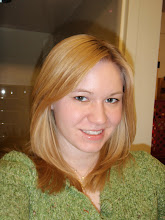Phantoms in the Brain Ch. 2
Chapter two gives us a more in depth look at phantom limbs and what may cause them to occur. Ramachandran and others have done many studies on this out of the ordinary phenomena and come up with quite reasonable and understandable explanations. The chapter discusses phantom arms in detail, but gives a brief overview of other phantoms such as legs and feet, faces, genitalia, and breasts.
In chapter two we meet Tom, a 17 year old male who lost his arm in a bad car accident in which he was thrown from his car, ripping his left arm from his body. Dr. Ramachandran explains how his renewed interest in phantom limbs brought him in contact with Tom and then explains the simple, yet very educating experiment he then performed. Using a Q-Tip Ramachandran touched different areas on Tom’s face, to both of their surprise, Tom was able to pinpoint where each facial sensation was picked up on his phantom limb. Ramachandran was then able to do the same with the upper, still attached, part of Tom’s left arm.
This result uses Wilder Penfield’s “ homunculus” (now called the “sensory homunculus”) to describe such a unbelievable result. Penfield was known for being one of the first to map out the brain and which parts correlate to different areas of the body. He was able to map out a strip through the middle of the brain, on both sides, that corresponds with a different set of sensory nerves in the body such as the feet, hands, lips, and other limbs. In this homunculus we see that some areas, such as the lips, contain more of the brain than others, such as the knee. Also, we can also use this diagram to see what areas are next to each other in brain stimulation. In the homunculus the hand is surrounded by the face on one side and the arm on the other. Ramachandran used this to explain how sensations in the face and arm could be felt in the phantom limb. Our miraculous brain can rewire itself in a matter of hours (as short as a day!) and take over unused space. In Tom’s case (and the case of many other phantom limb patients) his brain use the area normally dedicated to the hand and allowed the face and arm to take up more space. The brain is used to receiving signals from the hand when the hand region of the brain fires, in the case of a phantom limb it still believes the hand is sending the signals even when these signals are coming from the face. This results in the patient feeling as though the sensations are coming from the hand because the brain is being tricked. This is the same explanation for other phantom limbs, the brain has taken over the “unused” areas from the amputated limb and the closest regions of the brain now use that area. This results in stimulation in phantom limbs when the stimulation is coming from elsewhere.
I thought it was interesting that these sensations not only occur in hands and feet, but can occur in a woman who has received a mastectomy, a man who has had his penis amputated, and even among women who have had a hysterectomy. The brain makes sure to use all of the space it has, but this can also result in some interesting sensations for the amputee.
Saturday, January 23, 2010
Phantoms in the Brain--Chapter 2
This chapter focused on Phantom Limbs. This chapter continued to be interesting and made me more excited to read the book.
Subscribe to:
Post Comments (Atom)




0 comments:
Post a Comment